Monthly Archives: October 2023
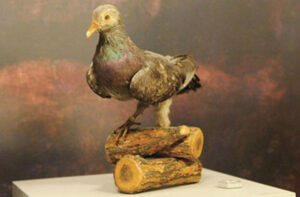 I love watching the pigeons that fly around at one end of the walking path I use regularly. They are wild of course, but maybe at one time they were owned…or maybe their parents were. Now, they are free to soar around in beautiful formations, as they enjoy the freedom of being carefree and, well just being birds. Not all pigeons are free, however, and some even perform a very important service…some to their country. Pigeons have actually been used in wars to carry messages to different battalions, sadly because they were expendable, where the men were not.
I love watching the pigeons that fly around at one end of the walking path I use regularly. They are wild of course, but maybe at one time they were owned…or maybe their parents were. Now, they are free to soar around in beautiful formations, as they enjoy the freedom of being carefree and, well just being birds. Not all pigeons are free, however, and some even perform a very important service…some to their country. Pigeons have actually been used in wars to carry messages to different battalions, sadly because they were expendable, where the men were not.
One famous pigeon known as “President Wilson,” was hatched in France. “President Wilson” (this special pigeon) assisted both the American tank corps and US infantry men in their fight against Germany. It was in the Meuse-Argonne Offensive, that “President Wilson” made his most famous flight. He was assisting the 78th Infantry near Grandpre. The battle had been a vicious one, and while engaging the enemy on the morning of October 5, 1918, President Wilson’s unit released him to request artillery support. No flight through a battleground was easy, but this one was especially dangerous. A bird can’t really fly without being seen, and the Germans knew to watch for pigeons. The German soldiers opened fire on him, peppering him with bullets. “President Wilson” sustained numerous injuries, nevertheless, he was able to make his flight back to headquarters in record setting time…under 25 minutes. “President Wilson” survived his wounds, after which he was retired and sent to the US Army Signal Corps Breeding and Training Center at Fort Monmouth, New Jersey, where he would live another eleven years. After his death, Wilson was taxidermized and presented to the Smithsonian Institution. He was transferred to the custody of the US Army in 2008. “President Wilson” is now located in the prestigious halls of the US military’s headquarters in Arlington, Virginia. He serves as a reminder that these simple birds…often considered a nuisance by the general public…were once war heroes.
Another famous pigeon was known as Cher Ami, who also gained fame during World War I. Cher Ami’s moment of heroism came during the actions of the so-called “Lost Battalion.” With the 77th Division finding themselves 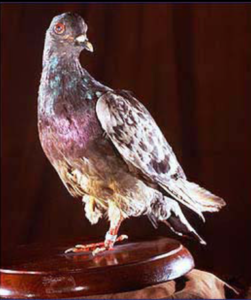 surrounded by the German army, besieging them for five days, Cher Ami was the third pigeon sent out to tell division headquarters that the men were surrounded and were taking fire, both enemy and friendly!! Cher Ami was hit almost as quickly as he rose. He was shot down but managed to take flight again. He arrived back at his loft at division headquarters 25 miles to the rear in just 25 minutes, helping to save the lives of the 194 survivors. He had been shot through the breast, blinded in one eye, and had a leg hanging only by a tendon. Cher Ami was the last pigeon available. Had he not made it, the men would have been on their own. Cher Ami was stuffed and mounted after his death and is now in the Smithsonian Museum of American History.
surrounded by the German army, besieging them for five days, Cher Ami was the third pigeon sent out to tell division headquarters that the men were surrounded and were taking fire, both enemy and friendly!! Cher Ami was hit almost as quickly as he rose. He was shot down but managed to take flight again. He arrived back at his loft at division headquarters 25 miles to the rear in just 25 minutes, helping to save the lives of the 194 survivors. He had been shot through the breast, blinded in one eye, and had a leg hanging only by a tendon. Cher Ami was the last pigeon available. Had he not made it, the men would have been on their own. Cher Ami was stuffed and mounted after his death and is now in the Smithsonian Museum of American History.
Looking back on World War I, and the many lives lost, we also need to remember that without war heroes like “President Wilson” and Cher Ami the losses would have been far greater. Many pigeons lost their lives in these efforts, but they were heroes for the sacrifices they made. I’m sure the soldiers knew that well.
 As long as there have been vehicles, there have been people who felt the need to race them. Enter Sidecar Racing. Like all forms of racing, Sidecar Racing began with started with vehicles built for the street. They were a simple motorcycle with a simple sidecar attachment. Over the years, however, the sidecars have evolved to increase speed and safety.
As long as there have been vehicles, there have been people who felt the need to race them. Enter Sidecar Racing. Like all forms of racing, Sidecar Racing began with started with vehicles built for the street. They were a simple motorcycle with a simple sidecar attachment. Over the years, however, the sidecars have evolved to increase speed and safety.
`
The early modifications were to lower the center of gravity by laying the driver forward over the engine. This modification reminds me of the Ninja motorcycle, otherwise known as the crotch rocket. It inspires speed in the vehicle. The sidecar itself was also changed from a mere basket to a platform, so that the passenger or monkey, could be mobile. Having a mobile passenger meant a moveable mass to help keep the tires on the ground at higher speeds. The passenger could lean this way and that to help stabilize the motorcycle and sidecar. As with any vehicle, the basic motorcycle components were used to build the racer…engine, steering, and larger diameter treaded tires. The racer was void of anything that could get in the way of aerodynamics. All that was there were fenders and whatever the driver and passenger could provide. Oddly, this type of sidecar, original around 1949, is still raced today in vintage classes, and most are home built.
Nevertheless, the vintage class has given way to the modern class, and after years of modifications and updates and the modern sidecar has emerged. Even today, some of the modern sidecars are home-built, but there are also companies who are dedicated to building sidecars. Whereas the home-built sidecars tend to be 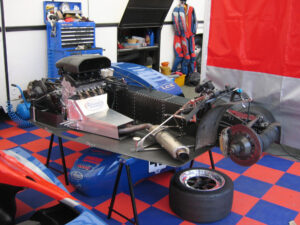 made of steel tubing and are less refined, the specialized companies use aluminum, carbon fiber, or other types of stronger, lighter material, designed to make the vehicle even faster. These specialized shops are also able to build a vehicle with a better suspension and better handling, as well as single swing arms for ease of wheel change. The modern sidecars use slick tires, as opposed to the larger diameter treaded tires. Race cars made the slick tires “famous” for their ability to build speed before takeoff. They also have molded aerodynamic bodies, probably much better than the home-built models, at least as far as speed is concerned.
made of steel tubing and are less refined, the specialized companies use aluminum, carbon fiber, or other types of stronger, lighter material, designed to make the vehicle even faster. These specialized shops are also able to build a vehicle with a better suspension and better handling, as well as single swing arms for ease of wheel change. The modern sidecars use slick tires, as opposed to the larger diameter treaded tires. Race cars made the slick tires “famous” for their ability to build speed before takeoff. They also have molded aerodynamic bodies, probably much better than the home-built models, at least as far as speed is concerned.
These days, there are three types of modern sidecars. Known as F1 (Formula 1), F2 (Formula 2), and F3 (Formula 3), with the F2 and F3 sidecars having the motors positioned under the drivers. Oddly, for full out speed, the best choice is the F1 model sidecar. I guess that placing the driver on top of the engine wasn’t the best modification for speed. The F1 models are sometimes referred to as long bikes. The motor on the F1 is behind the driver. The maximum engine displacement in this category is 1000cc 4 stroke. For the F2, the maximum engine displacement is 600cc 4 stroke or 500 cc 2 stroke. Engines are pre-1996 for F3. The F2 and F3 sidecars have a shorter wheelbase than the F1. This gives them better handling on short tracks, so 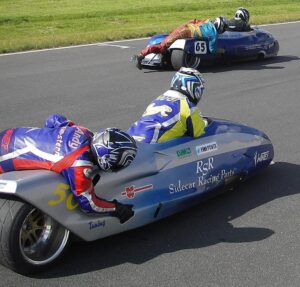 apparently the racer needs to know what model will fill the need for the track being raced. Whichever class the racer choses, the sidecar wheel will not have any suspension. The engines can be carbureted, or fuel injected. One hard and fast rule is that they must also be chain or belt drive, because shaft drive engines are allowed. Other than these many changes, the basic design is the same as the vintage sidecar racers. Obviously, if the sidecar were placed anywhere else, it would not be a sidecar. The sidecar racers usually run between $6,000 to $20,000 and will last for several years…probably a bargain considering the amount of money that goes into most race vehicles.
apparently the racer needs to know what model will fill the need for the track being raced. Whichever class the racer choses, the sidecar wheel will not have any suspension. The engines can be carbureted, or fuel injected. One hard and fast rule is that they must also be chain or belt drive, because shaft drive engines are allowed. Other than these many changes, the basic design is the same as the vintage sidecar racers. Obviously, if the sidecar were placed anywhere else, it would not be a sidecar. The sidecar racers usually run between $6,000 to $20,000 and will last for several years…probably a bargain considering the amount of money that goes into most race vehicles.
FIM (International Motorcycling Federation) Sidecar World Championship is the international sidecar racing championship. It is the only remaining original FIM road racing championship class that started in 1949.
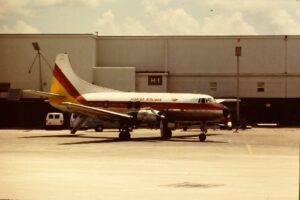 Many people have heard about the 1970 plane crash that killed the Marshall University football team, but what many people may not know is that the Marshall University crash was not the only crash that year, or even the first crash involving a football team. The first one involved the Wichita Stake Shockers football team. On Friday, October 2, 1970, at 1:14pm, in clear and calm weather, with amazing visibility, the Wichita State chartered 4-0-4 airliner crashed into a mountain peak just eight miles west of Silver Plume in Colorado. The plane, operated by Golden Eagle Aviation, the twin-engined propliner carried 37 passengers and a crew of three. Of those onboard, 29 were killed at the scene and two later died of their injuries at the hospital.
Many people have heard about the 1970 plane crash that killed the Marshall University football team, but what many people may not know is that the Marshall University crash was not the only crash that year, or even the first crash involving a football team. The first one involved the Wichita Stake Shockers football team. On Friday, October 2, 1970, at 1:14pm, in clear and calm weather, with amazing visibility, the Wichita State chartered 4-0-4 airliner crashed into a mountain peak just eight miles west of Silver Plume in Colorado. The plane, operated by Golden Eagle Aviation, the twin-engined propliner carried 37 passengers and a crew of three. Of those onboard, 29 were killed at the scene and two later died of their injuries at the hospital.
The plane was one of two 4-0-4 airliners flying the team to Logan, Utah. Three months earlier Wichita State had contracted Golden Eagle Aviation to supply a Douglas DC-6B, to fly the team to away games for the 1970 season. The four-engined DC-6 was a large, powerful aircraft that could accommodate the entire team in one plane. At the time of the contract, Golden Eagle Aviation did not own the DC-6. Nevertheless, they had made an arrangement with the Jack Richards Aircraft Company to use theirs. Unfortunately, after the agreements were made, the Jack Richards Aircraft Company DC-6 was damaged in a windstorm, so at the last minute it was unavailable for use. The two Martin 4-0-4s, hadn’t flown since 1967, so thy were quickly re-certified for flight. While it might seem like that could have been the cause of the crash, it was not. On October 2, 1970, the two 4-0-4s were ferried from the Jack Richards Aircraft Company facilities in Oklahoma City to Wichita, instead of the expected DC-6. The 4-0-4s were smaller planes, and so the team had to be split into two groups. Upon arrival in Wichita, the two aircraft were loaded with luggage and the passengers were boarded. The planes then headed west to a refueling stopover in Denver at Stapleton Airport. From Denver, they would continue to Logan Airport in northern Utah. The two planes were dubbed “Gold” and “Black” after the school colors. “Gold” was the aircraft that later crashed. It carried the starting players, head coach, and athletic director, as well as their wives, other administrators, boosters, and family. The “Black” plane transported the reserve players, assistant coaches, and other support personnel, and it took the normal route from Denver to Logan, going by way of the original flight plan and took a more northerly route, heading north from Denver to southern Wyoming then west, using a designated airway. This was less scenic, but this route allowed more time to gain altitude for the climb over the Rocky Mountains. The “Black” plane arrived safely in Utah.
The plane dubbed “Gold” took a more scenic route. The President of Golden Eagle Aviation, 37-year-old Ronald G Skipper, was the pilot flying the “Gold” plane. Normally, he would have been the pilot, but he was not rated for the 4-0-4, so he was acting as the first officer. During the flight to Denver, he visited passengers in the cabin, telling them of his plans to take a more scenic route, near Loveland Ski Area and Mount Sniktau, the proposed alpine skiing venues for the 1976 Winter Olympics, recently awarded to Denver in May. The captain of the “Gold” aircraft was 27-year-old Danny E Crocker, who occupied the right seat. While the aircraft was being refueled and serviced in Denver, First Officer Skipper purchased aeronautical sectional charts for the contemplated scenic route. The National Transportation Safety Board (NTSB) investigation report stated the First Officer testified that he intended to use the charts to help point out landmarks and objects of interest to the passengers. Unfortunately, this last-minute decision didn’t allow time to review the maps to make sure that they were traveling on a safe route, and that they were high enough to make it over the mountains.
Shortly before the crash, several witnesses described seeing an aircraft flying unusually low towards the 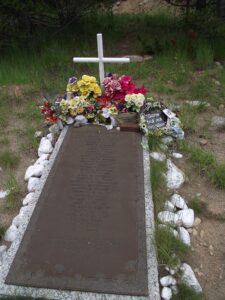
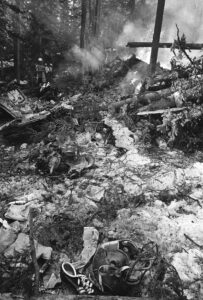 Continental Divide, which is, of course, quite high in altitude. Some witnesses who were located on higher mountainside locations, such as Loveland Pass at 11,990 feet, reported seeing it flying below them…into the mountains!! It is difficult for me to understand, how the pilots could no have seen this as a serious problem. Crash survivor Rick Stephens was a senior guard and stated in 2013, “…as we flew along over I-70, that there were old mines and old vehicles above us. I noticed we were quite a bit below the top of the mountains. I got up to go to the cockpit, which wasn’t unusual to do, and I could tell we were in trouble, looking out the window and seeing nothing but green in front of us.”
Continental Divide, which is, of course, quite high in altitude. Some witnesses who were located on higher mountainside locations, such as Loveland Pass at 11,990 feet, reported seeing it flying below them…into the mountains!! It is difficult for me to understand, how the pilots could no have seen this as a serious problem. Crash survivor Rick Stephens was a senior guard and stated in 2013, “…as we flew along over I-70, that there were old mines and old vehicles above us. I noticed we were quite a bit below the top of the mountains. I got up to go to the cockpit, which wasn’t unusual to do, and I could tell we were in trouble, looking out the window and seeing nothing but green in front of us.”
The other problem the plane had was that it was overloaded. Sadly, no one double checked the weight to make sure they were within safe limits. As the plane neared Loveland Pass, it flew up Clear Creek Valley, where it became trapped in a box canyon and was unable to climb above the mountain ridges surrounding it on three sides. It was also unable to complete a reversal turn away from the sharply rising terrain. At 1:14pm MDT, the “Gold” plane struck trees on the east slope of Mount Trelease, 1,600 feet below its summit, and crashed. The NTSB report stated that quite likely many of the passengers on board actually survived the initial impact. This was based on the testimony of survivors and rescuers. The load of fuel on board did not explode immediately. This allowed some of the survivors to escape the wreckage. Then, the passenger cabin exploded and trapped the people who were still alive. They had no way of escape. Of the 40 people on board, the death count at the scene was 29, which included 27 passengers, the captain, and flight attendant. One of the deceased passengers was an off-duty flight attendant who was assisting. Two of the initial 11 survivors later died of their injuries to bring the total dead to 31, 14 of whom were Wichita State football players. First to arrive at the crash scene were construction workers from the nearby Eisenhower Tunnel project and motorists on U.S. 6 (I-70). The first officer (company president) survived.
The National Transportation Safety Board report states that the weather did not play a role in the accident, but rather lists the probable cause to be that the pilot made improper decisions in-flight or in planning. The overloading probably played a part too, in that they couldn’t climb as fast as if they had not been overloaded. The report said that the cause was, “the intentional operation of the aircraft over a mountain valley route at an altitude from which the aircraft could neither climb over the obstructing terrain ahead, nor execute a successful course reversal, while other significant factors were the overloaded condition of the aircraft, the virtual absence of flight planning for the chosen route of flight from Denver to Logan, as well as a lack of understanding on the part of the crew of the performance capabilities and limitations of the aircraft, and the lack of operational management to monitor and appropriately control the actions of the flight crew.” It was a recipe for disaster. What I don’t understand is how the plane could have crashed less than a mile from an interstate highway that was straight and level in that area…the perfect place for an emergency landing. Why didn’t they use it?
Of course, the game was canceled, as were classes at Wichita State University. Utah State University’s football team held a memorial in the stadium where the game was to have been played…placing a wreath on the 50-yard line. Wichita State University officials and family members of the survivors were flown to Denver on an aircraft made available by Robert Docking, the Governor of Kansas. A memorial service was held on Monday, October 5th at Cessna Stadium in Wichita. The remaining members of the Wichita State team, with the NCAA and Missouri Valley Conference allowing freshman players to fill out the squad, decided to continue the 1970 season in honor of those lost. It was later designated the “Second Season.” Wichita State and Utah State had played in five of the previous six seasons, but never met again in football. Unable to fully recover from its loss, 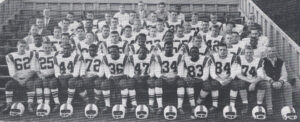 Wichita State discontinued varsity football after the 1986 season. Roadside memorial in Colorado on Interstate 70, milepost 217 Wichita State University built a memorial for those who died from the crash called Memorial ’70. Every year on October 2 at 9 a.m., a wreath is placed at this memorial. A roadside memorial plaque listing the names of the victims is located near the Colorado crash site, adjacent to westbound Interstate 70, at Dry Gulch at milepost 217, about two miles east of the Eisenhower Tunnel. A trail to the wreck site via Dry Gulch is 0.4 miles past the memorial off exit 216.
Wichita State discontinued varsity football after the 1986 season. Roadside memorial in Colorado on Interstate 70, milepost 217 Wichita State University built a memorial for those who died from the crash called Memorial ’70. Every year on October 2 at 9 a.m., a wreath is placed at this memorial. A roadside memorial plaque listing the names of the victims is located near the Colorado crash site, adjacent to westbound Interstate 70, at Dry Gulch at milepost 217, about two miles east of the Eisenhower Tunnel. A trail to the wreck site via Dry Gulch is 0.4 miles past the memorial off exit 216.
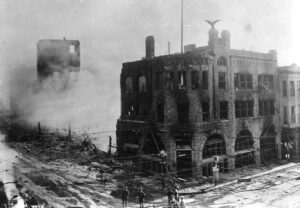 These days, terrorist attacks are…if not common, expected to happen at some point. It’s the crazy world we now live in, but in 1910, it wasn’t quite so common. Nevertheless, on October 1, 1910, there was a massive explosion that destroyed the Los Angeles Times building in the LA’s downtown area. The bombing killed 21 people and injuring many more. Harrison Otis, who was the Los Angeles Times publisher and a bitter opponent of unions, believed that the bomb was directed at him. So, he hired William J Burns, the nation’s top private detective to find out who the culprits were. Otis, in addition to printing numerous editorials against unions, was the leader of the Merchants and Manufacturing Association, which was a powerful group of business owners, all of whom had extensive political connections.
These days, terrorist attacks are…if not common, expected to happen at some point. It’s the crazy world we now live in, but in 1910, it wasn’t quite so common. Nevertheless, on October 1, 1910, there was a massive explosion that destroyed the Los Angeles Times building in the LA’s downtown area. The bombing killed 21 people and injuring many more. Harrison Otis, who was the Los Angeles Times publisher and a bitter opponent of unions, believed that the bomb was directed at him. So, he hired William J Burns, the nation’s top private detective to find out who the culprits were. Otis, in addition to printing numerous editorials against unions, was the leader of the Merchants and Manufacturing Association, which was a powerful group of business owners, all of whom had extensive political connections.
The investigation led Burns to the Bridge and Structural Iron Workers Union and their treasurer, John J McNamara. Burns personally arrested McNamara and his brother in Indiana in April 1911, after Burns got a confession out of Ortie McManigal. It seems that McManigal had allegedly been the intermediary between  McNamara and two bomb experts. Burns had no legal authority to arrest anyone, but he did so, and managed to get the brothers to California, where they were scheduled to be prosecuted.
McNamara and two bomb experts. Burns had no legal authority to arrest anyone, but he did so, and managed to get the brothers to California, where they were scheduled to be prosecuted.
As is typical, and even expected, the Union members and left-wing supporters all rallied around the McNamara brothers. They raised a large defense fund, and union representatives pleaded with Clarence Darrow to take the case. Darrow was well known as the best defense attorney in America. He had already managed to get “Big Bill” Haywood, the union leader of the Industrial Workers of the World, off on murder charges in Idaho a few years earlier. After being offered $50,000, Darrow reluctantly took the case. Public opinion supported the McNamara brothers, but the investigation Darrow performed was quickly turning up evidence to prove that the brothers were actually guilty. To make matters worse, members of the defense team tried to bribe the jury, just to keep up with the prosecution’s own bribery tactics. In the end, Darrow worked out a deal with Otis and the prosecutors that the brothers would plead guilty to escape the death penalty, which they did. It was the best he could do for them.
Still, this plan was not acceptable to either side, and Darrow got caught in the middle. Darrow was soon 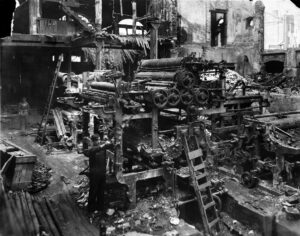 charged with bribery, and Otis arranged for Darrow’s prosecution. The union immediately deserted the great defense lawyer…not only did they refuse to pay his fee for the McNamara case, but they also refused to assist in his defense. Thankfully for Darrow, Earl Rogers, who was a notorious drunk, but also a brash, formidable, and effective Los Angeles attorney, took Darrow’s case. True to his reputation, Rogers managed to secure a mistrial for Darrow. Later, Darrow was acquitted after a second trial. Undaunted, Darrow went on to try even more distinguished cases, including the Leopold and Loeb murder trial and the Scopes evolution trial. Still, I doubt if any trial stood out in his memory quite as much as the trial that almost cost him his freedom.
charged with bribery, and Otis arranged for Darrow’s prosecution. The union immediately deserted the great defense lawyer…not only did they refuse to pay his fee for the McNamara case, but they also refused to assist in his defense. Thankfully for Darrow, Earl Rogers, who was a notorious drunk, but also a brash, formidable, and effective Los Angeles attorney, took Darrow’s case. True to his reputation, Rogers managed to secure a mistrial for Darrow. Later, Darrow was acquitted after a second trial. Undaunted, Darrow went on to try even more distinguished cases, including the Leopold and Loeb murder trial and the Scopes evolution trial. Still, I doubt if any trial stood out in his memory quite as much as the trial that almost cost him his freedom.

